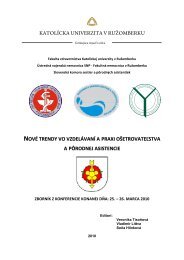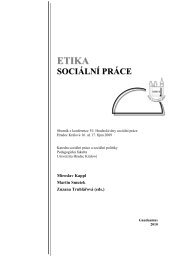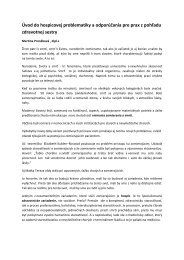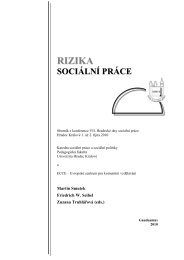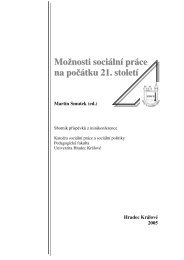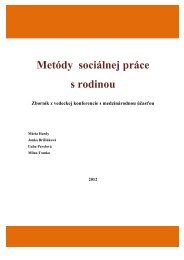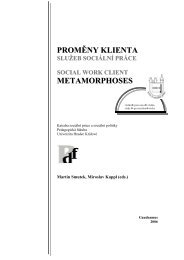Zmena klÃmy â možný dopad (nielen) na obyvateľstvo - Prohuman
Zmena klÃmy â možný dopad (nielen) na obyvateľstvo - Prohuman
Zmena klÃmy â možný dopad (nielen) na obyvateľstvo - Prohuman
Create successful ePaper yourself
Turn your PDF publications into a flip-book with our unique Google optimized e-Paper software.
CC, food security, AIDS, health in general and the links between these and the<br />
MDGs is key to breaking out of this “either or” myopia.<br />
Experts fear climate change<br />
will slow global fight against HIV/AIDS epidemic<br />
Despite progress in slowing the global HIV epidemic, climate disruptions threaten<br />
to undermine the gains in fighting this disease as parched land, wilted crops and<br />
ethnic tensions converge in some parts of the world. According to the Joint UN<br />
Programme on HIV/AIDS (UNAIDS), 34.2 million people around the world were infected<br />
with the disease in 2011, the most recent data available. Last year, the virus<br />
led to 1.7 million deaths. Though the number of afflicted people is rising, the rate of<br />
new infections is slowing down and infected people are living longer, in part due to<br />
better education and more affordable treatments reaching those who need it. While<br />
HIV still has no cure or vaccine, certain drugs can help ma<strong>na</strong>ge the disease so that<br />
infected people can live more productive lives, and can help reduce transmission.<br />
However, some of this progress may be lost as the planet changes, with extreme<br />
weather events and higher average temperatures cutting food security, creating refugee<br />
crises as people flee stricken regions and spread the disease. In 2009, Butler<br />
co-authored a UNAIDS paper on the links between climate change and the virus.<br />
“Populations with currently high rates of HIV are the most vulnerable to a worsening<br />
or prolongation of the epidemic due to (climate change),” said the report. “This places<br />
the people of (sub-Saharan Africa) at the greatest risk… though outside Africa<br />
populations in north east India and New Guinea may also be significantly impacted.”<br />
The relationship between climate change and HIV is a little tricky. The human<br />
immunodeficiency virus, or HIV, targets the body‘s cellular defence systems and<br />
causes acquired immunodeficiency syndrome (AIDS). It does not spread directly<br />
through weather-related trends, like the way flooding leads to cholera illnesses<br />
or the way West Nile virus infections correlate with higher temperatures. Rather,<br />
HIV spreads mainly through risky behaviours like unprotected sex and intravenous<br />
drug use, as well as from mother to child and through blood transfusions.<br />
Migration, poverty and food scarcity can spread the disease<br />
These behaviours can change as populations merge and disband, driven by fighting<br />
over increasingly scarce water and arable land. As civil institutions break<br />
46





